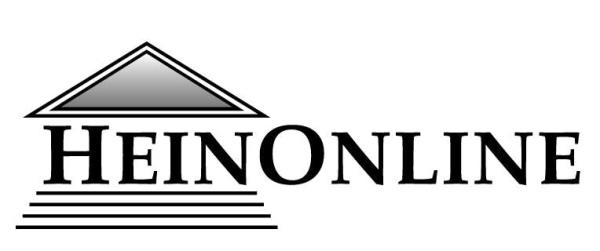The use of partial least squares (PLS) in the strategic management of business performance of companies
DOI:
https://doi.org/10.5937/ptp2403045KKeywords:
entrepreneurship, strategic management, innovation, business performanceAbstract
The subject of this paper is the analysis of strategic management, with a focus on the impact of innovation and information and communication (IC) resources on a company’s entrepreneurial strategy. The paper analyzes the management of strategic issues, with an emphasis on contingency planning and the establishment of an appropriate management system. The aim of the research is to define and measure the impact of innovation and information resources on the business performance of companies, with particular attention to small and medium-sized enterprises (SMEs) that face various challenges. The research identified a statistically significant positive relationship between the analyzed variables, concluding that innovation, IC equipment, and an entrepreneurial strategic approach are linked to the business performance of companies.
References
Abuhteara, M. A. Abd (2022). Strategijski menadžment u preduzetništvu kao faktor razvoja preduzeća [Strategic management in entrepreneurship as a factor in company development]. Novi Sad: Univerzitet Privredna akademija u Novom Sadu
Alegre, J., & Chiva, R. (2008). Assessing the impact of organizational learning capability on product innovationperformance: An empirical test. Technovation, 28(5), pp. 315–326
Alegre, J., Lapiedra, R., & Chiva, R. (2006). A measurement scale for product innovation performance. European journal of innovation management, 9(4), pp. 333–346
Aral, S., & Weill, P. (2007). It assets, organizational capabilities, and firm performance: How resource allocations and organizational differences explain performance variation. Organization science, 18(5), pp. 763–780
Bešić, C., & Đorđević, D. (2008). Razvoj korporativnog preduzetništva kao preduslova za unapređivanje konkurentnosti preduzeća [The development of corporate entrepreneurship as a prerequisite for improving the competitiveness of companies]. Tranzicija, 10(21-22), pp. 101–110
Bharadwaj, A. S. (2000). A resource-based perspective on information technology capability and firm performance: An empirical investigation. MIS quarterly, 24(1), pp. 169–196
Bocken, N. M., Short, S. W., Rana, P., & Evans, S. (2014). A literature and practice review to develop sustainable business model archetypes. Journal of cleaner production, 65, 42–56
Broman, G., Robèrt, K. H., Collins, T. J., Basile, G., Baumgartner, R. J., Larsson, T., & Huisingh, D. (2017). Science in support of systematic leadership towards sustainability. Journal of Cleaner Production, 140, pp. 1–9
Gardašević, J., & Radić, M. (2020). Understanding business processes with a look at a holistic-systemic approach to change management. Pravo – teorija i praksa, 37(2), 1–16. https://doi.org/10.5937/ptp2002001G
Chen, Y., Wang, Y., Nevo, S., Jin, J., Wang, L., & Chow, W. S. (2014). It capability and organizational performance: The roles of business process agility and environmental factors. European Journal of Information Systems, 23(3), 326–342
Ireland, R. D., & Webb, J. W. (2007). Strategic entrepreneurship: Creating competitive advantage through streams of innovation. Business horizons, 50(1), 49–59
Janićijević, N. (2013). Organizaciona kultura i menadžment [Organizational culture and management]. Beograd: Ekonomski fakultet
Knežević, N., Bojović, N. & Vešović, V. (2008). Organizaciona struktura procesno orijentisane organizacije [Organizational structure in process oriented organization]. In: XXVI Simpozijum o novim tehnologijama u poštanskom i telekomunikacionom saobraćaju – PosTel 2008 [XXVI Symposium on new technologies in postal and telecommunication traffic – PosTel 2008] (pp. 1–8), Beograd: Saobraćajni fakultet Univerziteta u Beogradu
Kostić-Stanković, M., Makajić-Nikolić, D. & Vujošević, M. (2011). Korišćenje stabla neispravnosti u upravljanju rizikom oglašavanja [Using fault tree analysis in management of adverising risk]. In: Kostić, K. (ur.), VIII Skup privrednika i naučnika SPIN 2011: Operacioni menadžment u funkciji održivog ekonomskog rasta i razvoja Srbije 2011-2020 [VIII Scientific meeting of businessmen and scientists SPIN 2011: Operational management in the function of sustainable economic growth and development of Serbia 2011-2020] (str. 472-483), Beograd: Fakultet organizacionih nauka
Kovač, A. (2012). Organizaciono strukturiranje i strateške poslovne jedinice u funkciji efikasnog upravljanja [Organizational structuring and strategic business units in the function of efficient management]. Škola biznisa VPŠ Novi Sad, 3, pp. 51–57
Muković, S. (2015), Upravljanje organizacionom strukturom u cilju optimizacije poslovnog sistema [Managing organizational structure in order to optimize the business system]. Ekonomski izazovi, 4(7), pp. 122–127
Plavšić A., & Paunović M. (2011). Strategijski pristup menadžmentu operacija [Strategic approach to operations management]. In: VIII Skup privrednika i naučnika SPIN 2011: Operacioni menadžment u funkciji održivog ekonomskog rasta i razvoja Srbije 2011-2020. [VIII Scientific meeting of businessmen and scientists SPIN 2011: Operational management in the function of sustainable economic growth and development of Serbia 2011-2020] (str. 207-213), Beograd: Fakultet organizacionih nauka
Santhanam, R., & Hartono, E. (2003). Issues in linking information technology capability to firm performance. MIS quarterly, 27(1), pp. 125–153
Stefanović, Ž. (2004). Menadžment [Management]. Kragujevac: Ekonomski fakultet
Tanriverdi, H. (2006). Performance effects of information technology synergies in multibusiness firms. MIS quarterly, 30(1), pp. 57–77
Downloads
Published
How to Cite
Issue
Section
License
Copyright (c) 2024 Maja Kovačević, Svetlana Ignjetijević

This work is licensed under a Creative Commons Attribution 4.0 International License.















